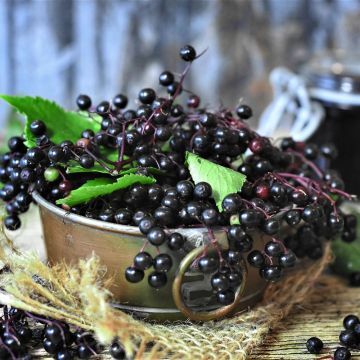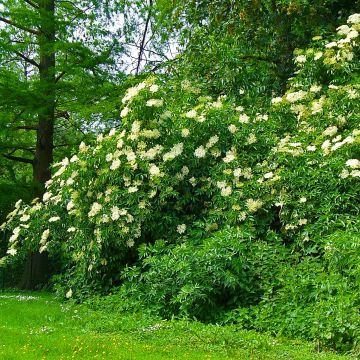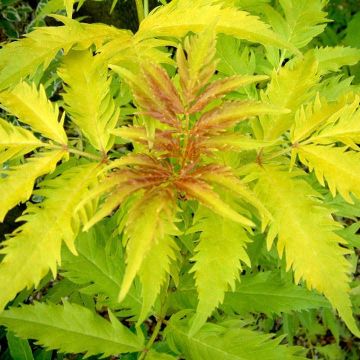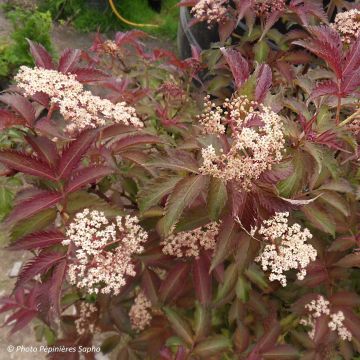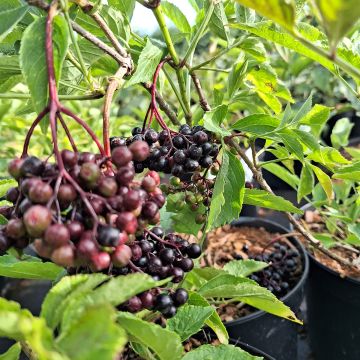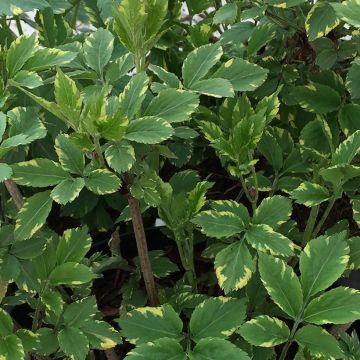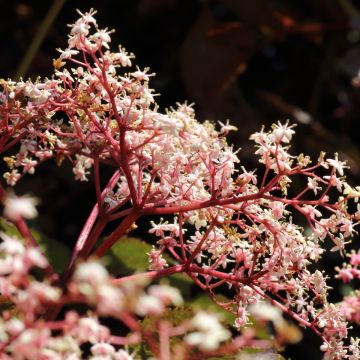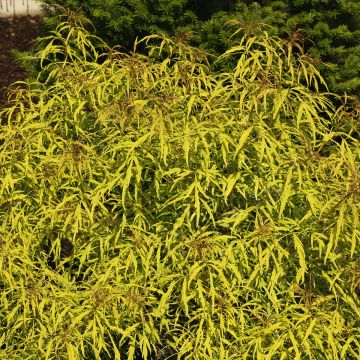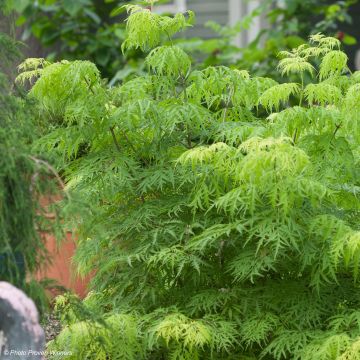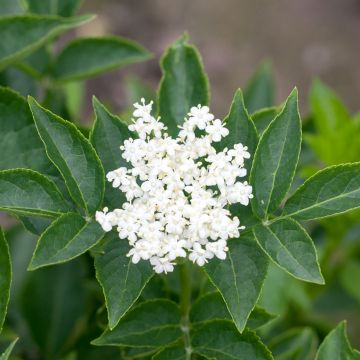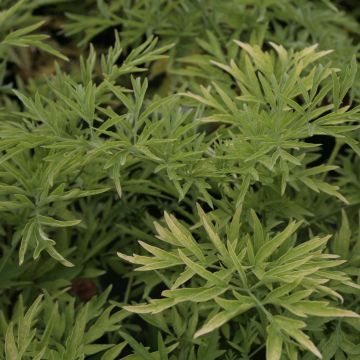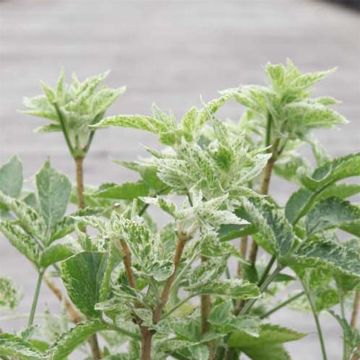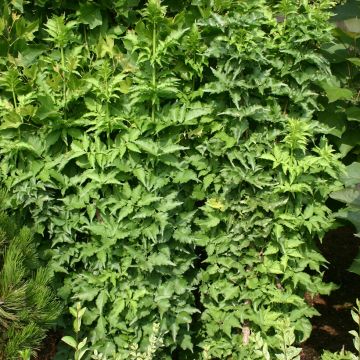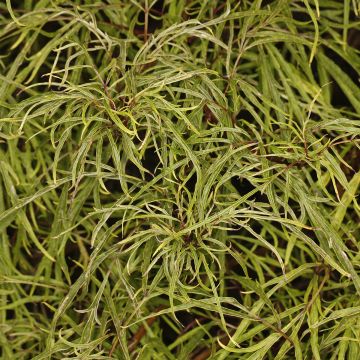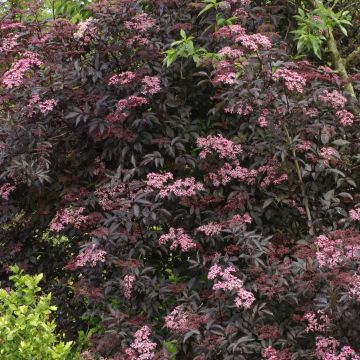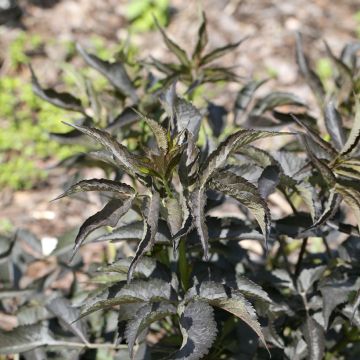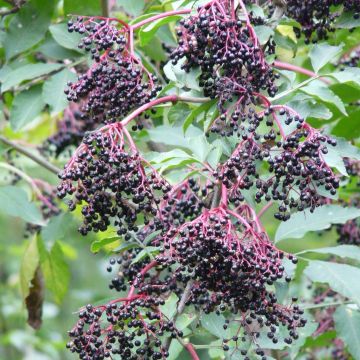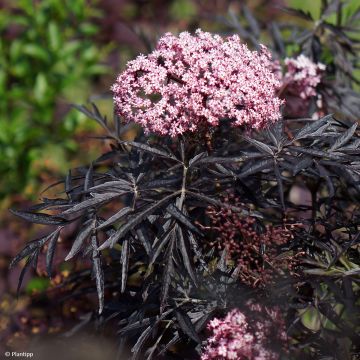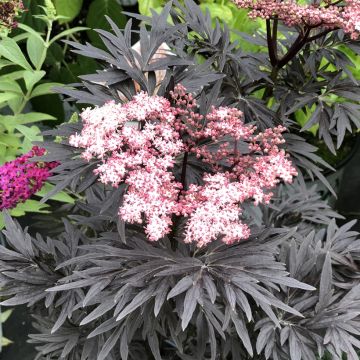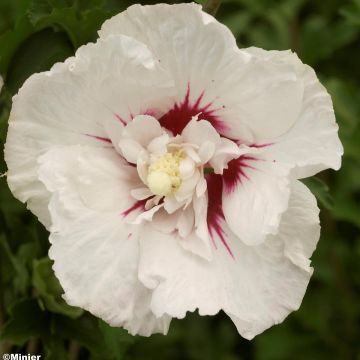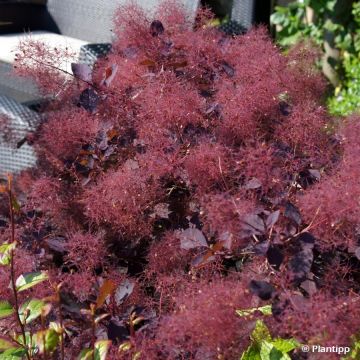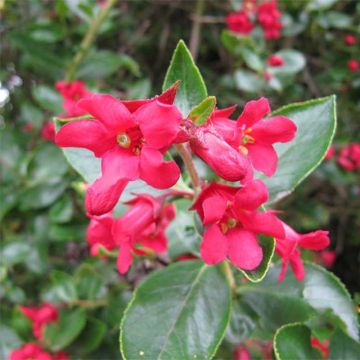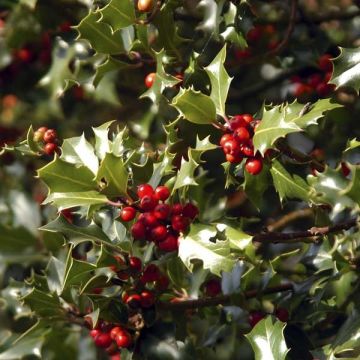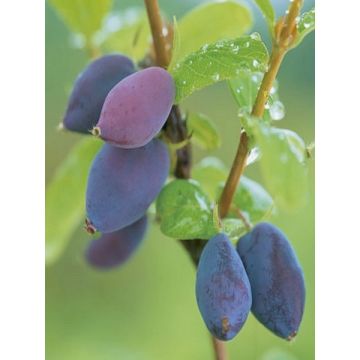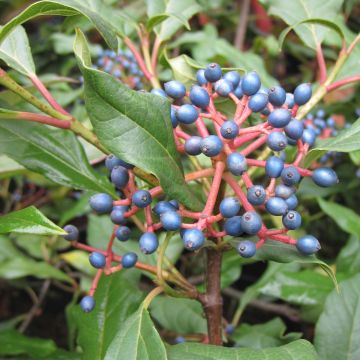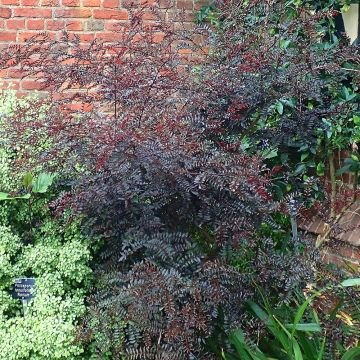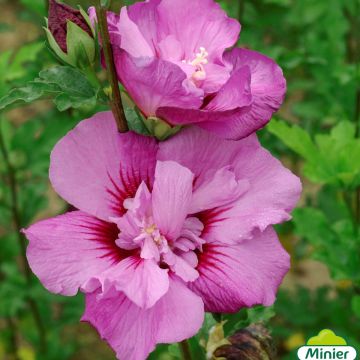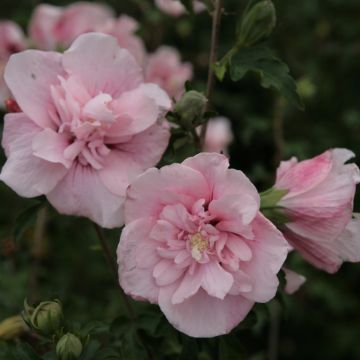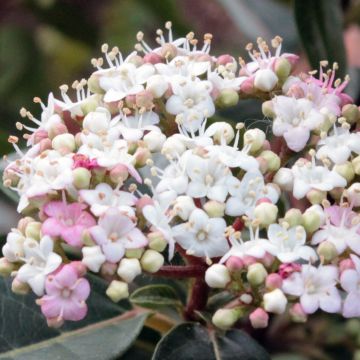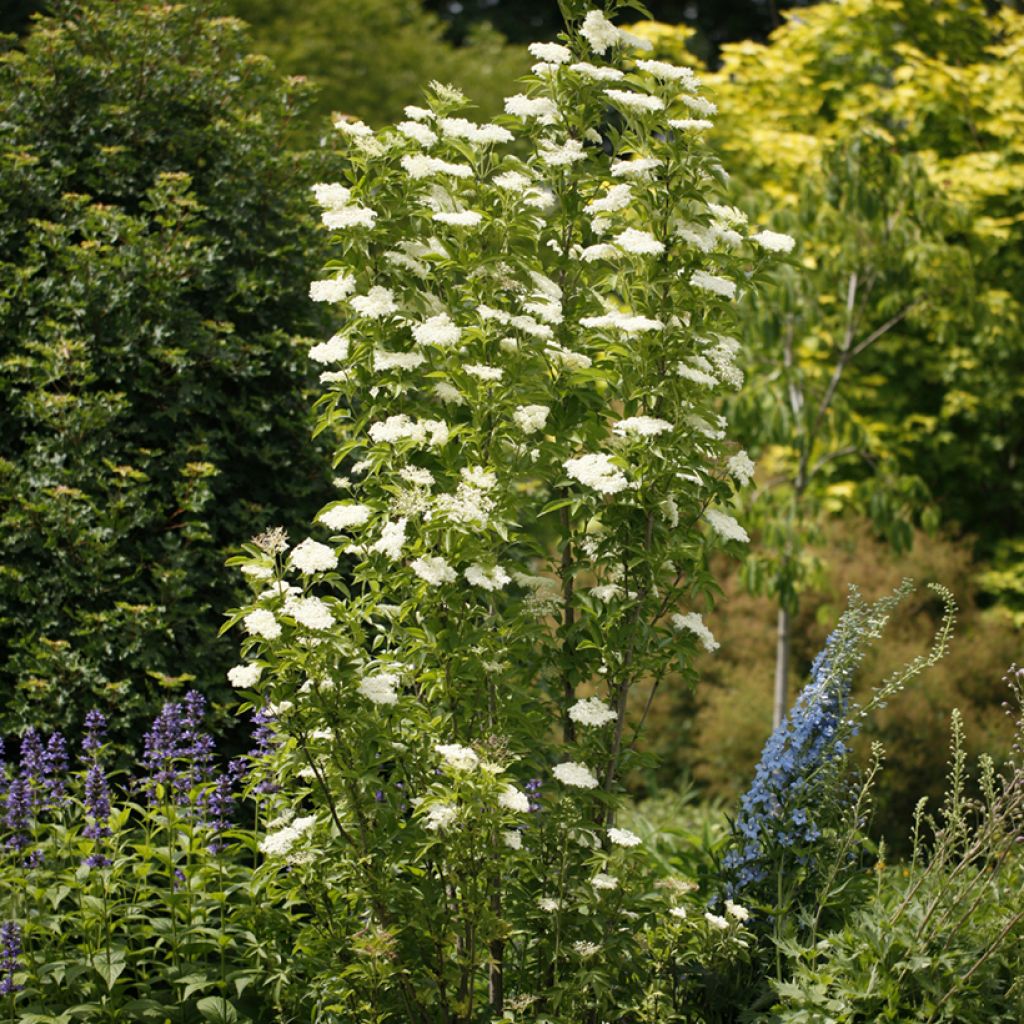

Sambucus nigra Obelisk - Elder
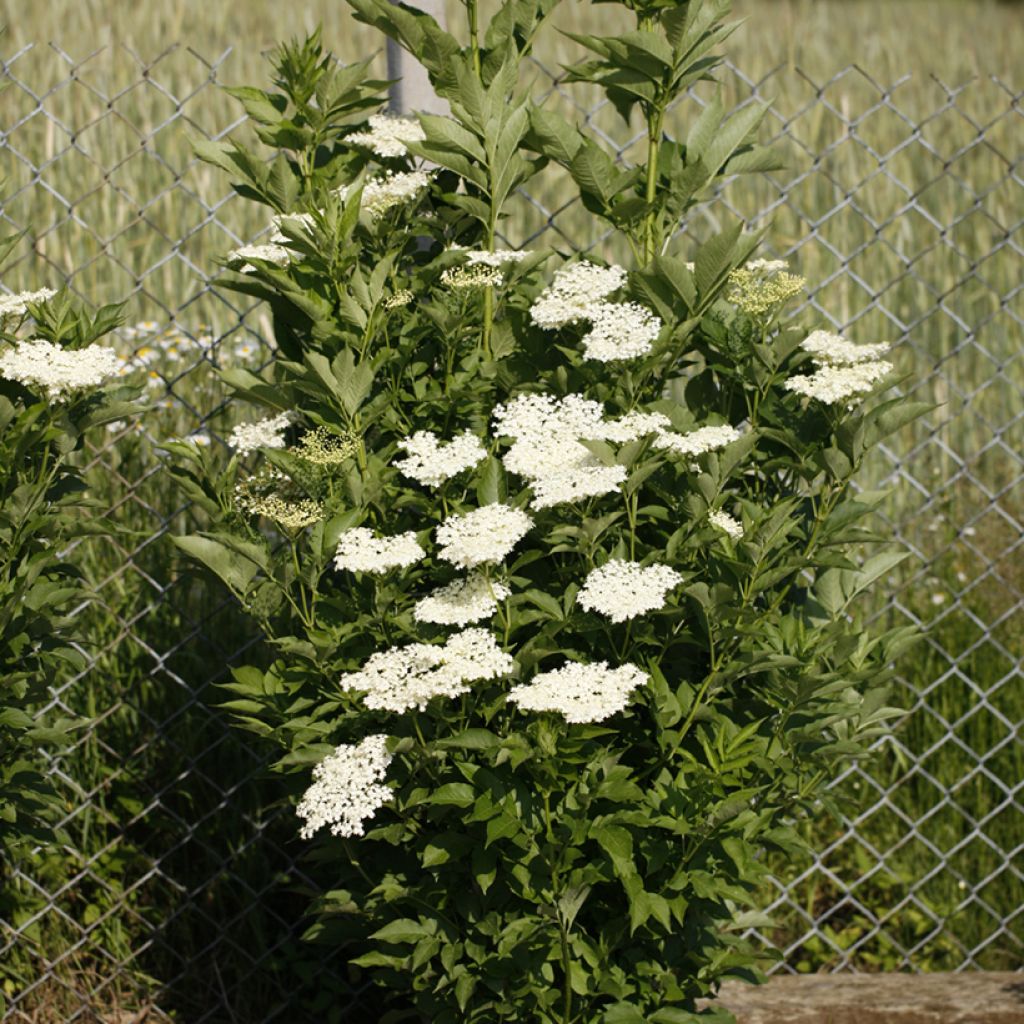

Sambucus nigra Obelisk - Elder
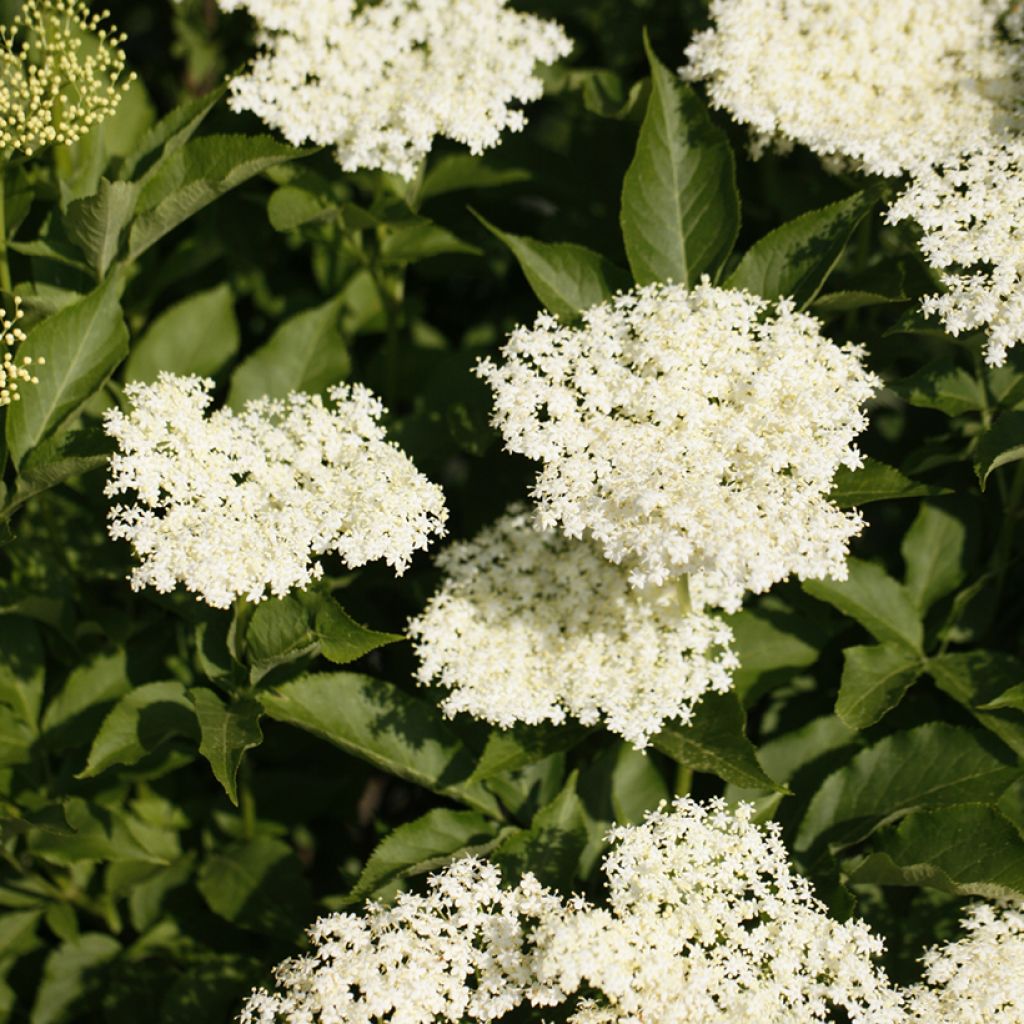

Sambucus nigra Obelisk - Elder
Sambucus nigra Obelisk - Elder
Sambucus nigra 'Obelisk'PBR
Elder, Black Elder, European Elder, Elderberry
Why not try an alternative variety in stock?
View all →This plant carries a 24 months recovery warranty
More information
We guarantee the quality of our plants for a full growing cycle, and will replace at our expense any plant that fails to recover under normal climatic and planting conditions.
From €5.90 for pickup delivery and €6.90 for home delivery
Express home delivery from €8.90.
Delivery to Corse prohibited: UE law prohibits the import of this plant from mainland France to Corse as part of the fight against Xylella fastidiosa. Please accept our sincere apologies.
More information
Does this plant fit my garden?
Set up your Plantfit profile →
Description
Sambucus nigra 'Obelisk' is the most vigorous and floriferous of the columnar Black Elderberries. Unlike other fastigiate varieties, this bush has abundant, well-formed, elegant, and perfectly healthy foliage. Its flowering in large frothy white umbels is particularly abundant in early summer. Hardy and easy to grow in ordinary soil, in full sun or partial shade and compact, this shrub is suitable for all gardens, even small ones.
Sambucus nigra 'Obelisk' was discovered in Poland. This variety was awarded at the plant novelties competition of the "Green is Life" exhibition in 2013. It is a plant of the caprifoliaceae, adoxaceae, or viburnaceae family, depending on the classifications. 'Obelisk' is derived from Sambucus nigra, a wild species widespread in Europe, North Africa, and as far as Asia Minor.
The 'Obelisk' elderberry is a deciduous shrub with a slender, narrow, columnar habit, reaching 3-4 m in height and 1 m in spread. Its rapid growth allows it to reach maturity around the age of seven. Its branches are straight and upright, its foliage is splendid; its leaves are composed of 5 to 7 toothed, bright green leaflets. Flowering usually occurs in June (or a little earlier depending on the climate), in the form of numerous large 10 to 15 cm wide compound umbels, well arranged on the vegetation. The small, slightly fragrant, 5-petaled white flowers are borne on reddish petioles. This flowering, slightly fragrant, attracts numerous pollinators. The fruits are borne in clusters of shiny, 6 to 8 mm berries, initially red then blackish-purple, ripening between July and August. Fruit production will be more abundant if another elderberry is present in the garden. The light green, then grey to brown, bark is cracked, fissured, and has numerous lenticels. It becomes spongy with age.
The 'Obelisk' elderberry is distinguished by the elegance of its columnar habit. Like all elderberries, it is hardy and easy to grow in ordinary, not-too-dry soil, without any specific soil requirements. Plant it, for example, in a shrub border, preferably in the foreground, or near an entrance, a window, or along a path. It can be associated with many rustic or colourful shrubs, with decorative flowers or foliage. For example, Hydrangea paniculata 'Framboisine' (Panicled Hydrangea) with its large clusters of pink flowers brings a touch of softness to the foliage of the black elderberry, Viburnum opulus 'Roseum' (Snowball Viburnum) with its white flower balls followed by red berries, Cornus alba 'Elegantissima' (Variegated Redtwig Dogwood) with its variegated leaves and magnificent red winter stems. The scene created will be interesting throughout the year.
In the kitchen: the flowers can be prepared in fritters or syrup by macerating them in sugar. The buds in vinegar are used to enhance salads, and the berries are consumed as juice, jellies or jams, or in wine. They pleasantly flavour apple cakes. Only the flowers and berries without their petioles are edible, the rest of the plant can be toxic.
In the garden: elderberry leaves are known to accelerate compost decomposition. Black elderberry leaf infusion is useful in organic gardening to fight against mildew and aphid or rodent attacks: macerate 1 kg of leaves for a few days in 10 L of water, and spray as needed. It can also be planted in an orchard, where it attracts insect-predatory birds.
Report an error about the product description
Sambucus nigra Obelisk - Elder in pictures




Plant habit
Flowering
Foliage
Botanical data
Sambucus
nigra
'Obelisk'PBR
Adoxaceae (Viburnaceae)
Elder, Black Elder, European Elder, Elderberry
Cultivar or hybrid
Other Sambucus - Elder tree
Planting and care
The easy to grow, 'Obelisk' elderberry can be planted in spring or autumn, in ordinary soil, not too poor, deep enough and not too dry in summer. It requires little maintenance. Plant it in a sunny or semi-shaded location. It is not very demanding in terms of soil, the ideal mix for planting being half compost/half garden soil. It is very hardy. To promote flowering, prune the old branches to rejuvenate them and cut back the young branches by a third, at the end of winter. Fruit production will be more abundant if another elderberry is present in the garden.
Planting period
Intended location
Care
This item has not been reviewed yet - be the first to leave a review about it.
Hedge shrubs
Haven't found what you were looking for?
Hardiness is the lowest winter temperature a plant can endure without suffering serious damage or even dying. However, hardiness is affected by location (a sheltered area, such as a patio), protection (winter cover) and soil type (hardiness is improved by well-drained soil).

Photo Sharing Terms & Conditions
In order to encourage gardeners to interact and share their experiences, Promesse de fleurs offers various media enabling content to be uploaded onto its Site - in particular via the ‘Photo sharing’ module.
The User agrees to refrain from:
- Posting any content that is illegal, prejudicial, insulting, racist, inciteful to hatred, revisionist, contrary to public decency, that infringes on privacy or on the privacy rights of third parties, in particular the publicity rights of persons and goods, intellectual property rights, or the right to privacy.
- Submitting content on behalf of a third party;
- Impersonate the identity of a third party and/or publish any personal information about a third party;
In general, the User undertakes to refrain from any unethical behaviour.
All Content (in particular text, comments, files, images, photos, videos, creative works, etc.), which may be subject to property or intellectual property rights, image or other private rights, shall remain the property of the User, subject to the limited rights granted by the terms of the licence granted by Promesse de fleurs as stated below. Users are at liberty to publish or not to publish such Content on the Site, notably via the ‘Photo Sharing’ facility, and accept that this Content shall be made public and freely accessible, notably on the Internet.
Users further acknowledge, undertake to have ,and guarantee that they hold all necessary rights and permissions to publish such material on the Site, in particular with regard to the legislation in force pertaining to any privacy, property, intellectual property, image, or contractual rights, or rights of any other nature. By publishing such Content on the Site, Users acknowledge accepting full liability as publishers of the Content within the meaning of the law, and grant Promesse de fleurs, free of charge, an inclusive, worldwide licence for the said Content for the entire duration of its publication, including all reproduction, representation, up/downloading, displaying, performing, transmission, and storage rights.
Users also grant permission for their name to be linked to the Content and accept that this link may not always be made available.
By engaging in posting material, Users consent to their Content becoming automatically accessible on the Internet, in particular on other sites and/or blogs and/or web pages of the Promesse de fleurs site, including in particular social pages and the Promesse de fleurs catalogue.
Users may secure the removal of entrusted content free of charge by issuing a simple request via our contact form.
The flowering period indicated on our website applies to countries and regions located in USDA zone 8 (France, the United Kingdom, Ireland, the Netherlands, etc.)
It will vary according to where you live:
- In zones 9 to 10 (Italy, Spain, Greece, etc.), flowering will occur about 2 to 4 weeks earlier.
- In zones 6 to 7 (Germany, Poland, Slovenia, and lower mountainous regions), flowering will be delayed by 2 to 3 weeks.
- In zone 5 (Central Europe, Scandinavia), blooming will be delayed by 3 to 5 weeks.
In temperate climates, pruning of spring-flowering shrubs (forsythia, spireas, etc.) should be done just after flowering.
Pruning of summer-flowering shrubs (Indian Lilac, Perovskia, etc.) can be done in winter or spring.
In cold regions as well as with frost-sensitive plants, avoid pruning too early when severe frosts may still occur.
The planting period indicated on our website applies to countries and regions located in USDA zone 8 (France, United Kingdom, Ireland, Netherlands).
It will vary according to where you live:
- In Mediterranean zones (Marseille, Madrid, Milan, etc.), autumn and winter are the best planting periods.
- In continental zones (Strasbourg, Munich, Vienna, etc.), delay planting by 2 to 3 weeks in spring and bring it forward by 2 to 4 weeks in autumn.
- In mountainous regions (the Alps, Pyrenees, Carpathians, etc.), it is best to plant in late spring (May-June) or late summer (August-September).
The harvesting period indicated on our website applies to countries and regions in USDA zone 8 (France, England, Ireland, the Netherlands).
In colder areas (Scandinavia, Poland, Austria...) fruit and vegetable harvests are likely to be delayed by 3-4 weeks.
In warmer areas (Italy, Spain, Greece, etc.), harvesting will probably take place earlier, depending on weather conditions.
The sowing periods indicated on our website apply to countries and regions within USDA Zone 8 (France, UK, Ireland, Netherlands).
In colder areas (Scandinavia, Poland, Austria...), delay any outdoor sowing by 3-4 weeks, or sow under glass.
In warmer climes (Italy, Spain, Greece, etc.), bring outdoor sowing forward by a few weeks.

































